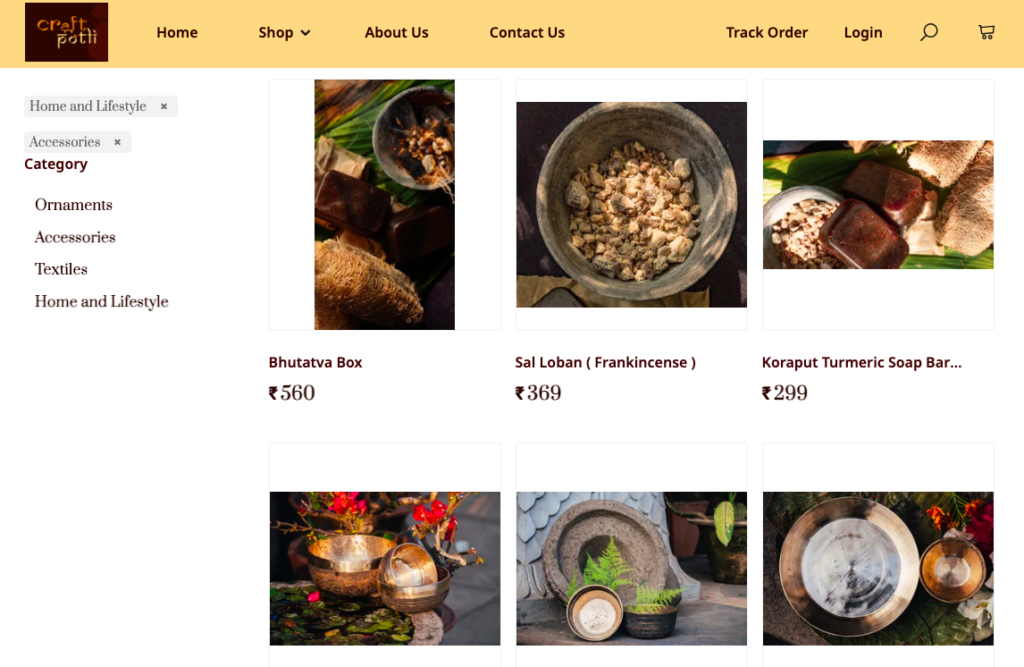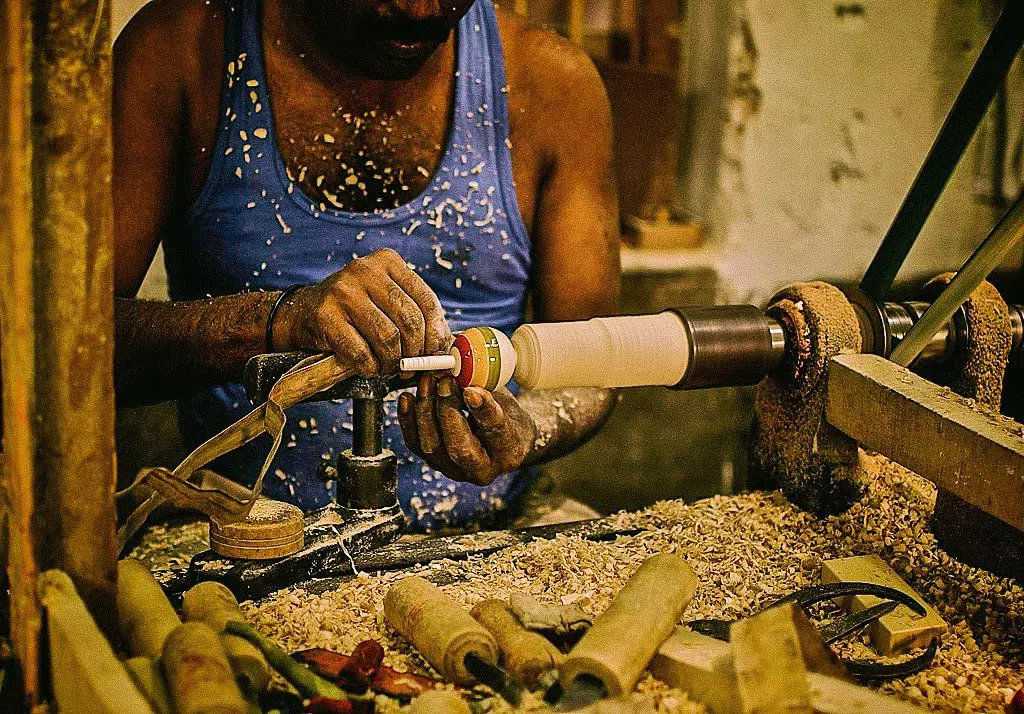7 million! That’s the estimated number of unorganised non-farming rural artisans that are present in India. Despite their large size, they are the most under-served sections of the society. Indian traditional artisans are part of our incredibly rich cultural heritage.
However, the low income, low opportunities and scarce customer base have scared off the newer generations from depending on it as a source of income.
This is where eCommerce has come and created an enormous impact. Digitization and shifting offline businesses to online channels of distribution have given new life to traditional artisans.
Are you a traditional artisan, looking for better income opportunities from your handcrafted products? Here are all the reasons you should be looking at setting up your own online business.
Contents
- 1 Newer audiences and wider markets
- 2 Shipping that helps Indian artisans deliver nationally
- 3 Building a sustainable community
- 4 Reviving interests and protecting generational skill
- 5 Durable means of income
- 6 Social media fame
- 7 Global exposure through digital exhibitions
- 8 Government initiatives
- 9 Technological empowerment
Newer audiences and wider markets
Rural artisans have historically been restricted to the villages that they work in. It is very difficult to find new customers and buyers who would be interested in paying a higher price point for their handmade products.
With the help of eCommerce, these artisans have the opportunity to promote their work anywhere in the world. Creating an eCommerce website gives them a digital identity that helps them attract a diverse demographic of buyers.
The online store Craftpotli sells artisanal handcrafted products that are made by tribal women deep in the villages of Odisha and Chattisgarh. By hosting their own online store on Instamojo, they have been able to connect to the world without having to give up their homes.

Shipping that helps Indian artisans deliver nationally
Seeing the product online does not automatically mean the product can be shipped to where the customer is! To be able to reach newer markets physically it’s important for these local artisans to connect to a trustworthy shipping partner.
On Instamojo, you do not need to worry about finding and shipping products individually. Our mojoXpress feature allows you to choose from 8 reliable and safe shipping partners that will help with door-to-door pickup and delivery.
Building a sustainable community
Indian artisans and traditional craftsmen have been using sustainable techniques and materials for their craft for centuries. They use materials that are sourced from the earth and have minimal wastage.
Sustainable and eco-friendly products like these have a special consumer interest in today’s times. People are aware of where they want to spend their money. And what’s even better? 75% of sustainable goods sell online better than in-store.
Going online helps these artisans connect to communities that would appreciate the sustainbility of handmade crafts. These communities then help increase sales through word-of-mouth marketing.
Reviving interests and protecting generational skill
Indian traditional artisans have long faced the threat of extinction. Modernization, fast living and industrialization have been threatening the fabric of these social communities.
For centuries, craftsmen to pass on their unique skills to the next generation. But, today, the sons and daughters of these craftsmen do not show an interest in preserving their trademark and craftsmanship.
These skills need to be preserved and eCommerce is their knight in shining armour.
With online exposure, these artisans are seeing a revived interest in their work from different parts of the world. Artisans are now returning to their hometowns to revive the craft and keep it alive and thriving.
For example, the Meeran brothers set up the online store for Channapatna Toys, a 200-year-old wooden toy business operating out of rural Karnataka. Read their full story here.

Durable means of income
Before going online, traditional artisans often struggled to maintain a consistent income. They relied on sporadic local sales or craft fairs, leaving them vulnerable to seasonal fluctuations and limited customer reach.
D2C eCommerce provides traditional handcraft businesses with a reliable income source. It connects them directly with customers and reduces middlemen. Here is why more brands are choosing the D2C route today.
Social media fame
Traditional artisans faced challenges in building their brand and gaining recognition before going online. They had limited means to showcase their work and lacked a platform to connect with potential customers.
Now by being present on social media platforms, traditional artisanal businesses can transform their marketing strategies and reach a broader audience. These platforms allow artisans to visually showcase their meticulously crafted products through high-quality images and engaging content.
Related read: How to set up social media for small businesses; A complete guide
Sharing their work on platforms like Instagram, Facebook, Pinterest, and TikTok enables them to tell their unique stories and the creative processes behind each item.
This storytelling not only humanizes their brand but also resonates with potential customers, making them feel connected to the artisan and their craft.
See how brands based on traditional artisanal products are telling the stories of the hands behind the craft.
View this post on Instagram
If you are a social media business and don’t yet have your own online store. You can simply collect online payments by creating Payment Links that can be shared on any platform!
Global exposure through digital exhibitions
eCommerce websites along with government initiatives can help these rural clusters show their labour of love way beyond their immediate neighbourhoods.
With eCommerce, they can now show their products anywhere in the world.
For example, The Export Promotion Council for Handicrafts (EPCH) works closely with the government to promote Indian handicrafts in international markets.
They organize digital exhibitions, participate in virtual trade shows, and provide assistance to artisans in meeting international quality and compliance standards, thereby increasing global exposure for traditional crafts.
Related read: 9 Traditional Indian products to sell online
Government initiatives
Indian traditional artisans have historically suffered financial hardships and lacked access to resources and training to improve their craft. Government initiatives were often limited or insufficient. But times have been rapidly improving.
Various government programs and incentives support traditional artisans, providing them with financial aid, training, and resources to adapt to digital marketplaces.
Here are some excellent examples of very effective government initiatives:
- Government programs in India often provide financial assistance in the form of grants, subsidies, or low-interest loans to traditional artisans. The Ministry of Textiles in India offers the “Samarth Scheme” that provides financial assistance to artisans and weavers for the purchase of modern equipment and tools required to enhance productivity and product quality
- The Indian government has implemented training programs to enhance the digital literacy and business acumen of traditional artisans. These programs offer workshops and skill development courses on topics such as e-commerce, online marketing, and digital payment systems.
- To support artisans in entering the digital space, the government has created platforms like the ‘India Handmade’ and marketplaces dedicated to traditional crafts. These platforms provide artisans with a space to showcase their products and reach a wider audience, often with reduced or waived registration fees.
- The Geographical Indications (GI) tag system in India protects traditional products like “Kancheepuram Silk Sarees” and “Darjeeling Tea.” These tags safeguard the products’ unique characteristics and ensure that only genuine artisans and regions can use the names, preventing digital counterfeiting.
Related read: Union Budget 2023: 8 Takeaways from the Amrit Kaal Budget for D2C brands
Technological empowerment
Artisans often faced challenges in managing inventory, pricing, and reaching customers efficiently. Going online empowers them with user-friendly digital tools that simplify these tasks.
At Instamojo, we enable artisans to embrace technology by facilitating online payment processing and helping in the creation of digital storefronts to sell handmade products online.
Additionally, the platform also provides valuable data and analytics insights to help artisans make informed decisions and enhance their online presence.
With Instamojo’s support, artisans can transition to the digital marketplace with ease, reaching a broader customer base and increasing their income while maintaining the traditional charm of their handcrafted creations.
This is how simple it can be to create your own eCommerce online store with instamojo. All it take is 5 mins. Don’t believe me?
See with your own eyes.

